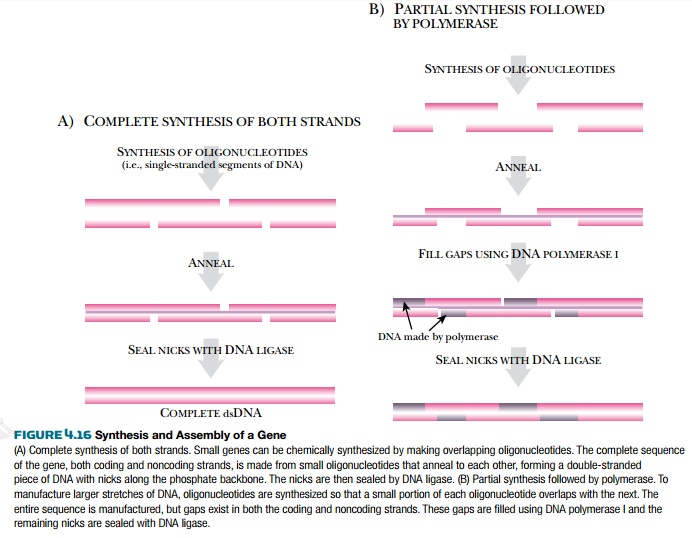Chapter: Biotechnology Applying the Genetic Revolution: DNA Synthesis in Vivo and in Vitro
Chemical Synthesis of Complete Genes
CHEMICAL
SYNTHESIS OF COMPLETE GENES
As mentioned earlier, at each nucleoside addition in chemical synthesis, a proportion of oligonucleotides do not react with the next base, and these are capped with an acetyl group. The efficiency for nucleoside addition is critical, because if each step has low efficiency, the number of full-length oligonucleotides will decrease exponentially. For example, if the efficiency is 50% at each round, only half of the oligonucleotides add the second base, one-fourth would add the third base, one- eighth would get four bases; one-sixteenth would get the fifth base, and so on. Even if the final product were merely 10 bases in length, poor coupling would yield minuscule amounts of full-length product.
It is critical for DNA
synthesizers to have about 98% efficiency in each round, and then truncated
products are the minority of the final sample. With high efficiencies, it is
possible to synthesize longer segments of DNA. At 98% efficiency, an
oligonucleotide that is 100 nucleotides long would give about 10% final yield.
If the desired oligonucleotide is separated from the truncated products by
electrophoresis, it is possible to get plenty of full-length products.

Complete genes can be
synthesized by linking smaller oligonucleotides together (Fig. 4.16). If the
complete sequence of a gene is known, then long oligonucleotides can be
synthesized identical to that sequence. The efficiency of the DNA synthesizer
usually limits the length of each segment to about 100 bases; therefore, the
gene segments are made with overlapping ends. Because oligonucleotides are
single-stranded, both strands of the gene must be synthesized and annealed to
each other, and then the segments are linked using ligase. Another strategy for
assembly is to create strands that overlap only partially, and then use DNA
polymerase I to fill in the large single-stranded gaps.
Related Topics